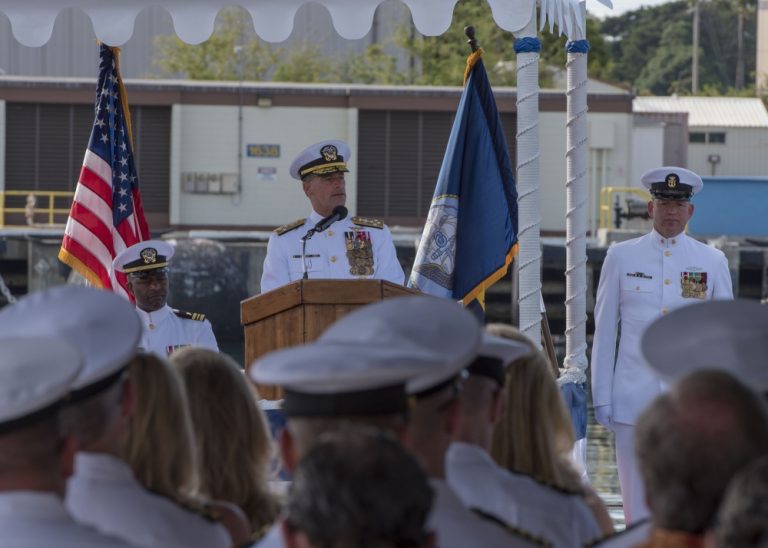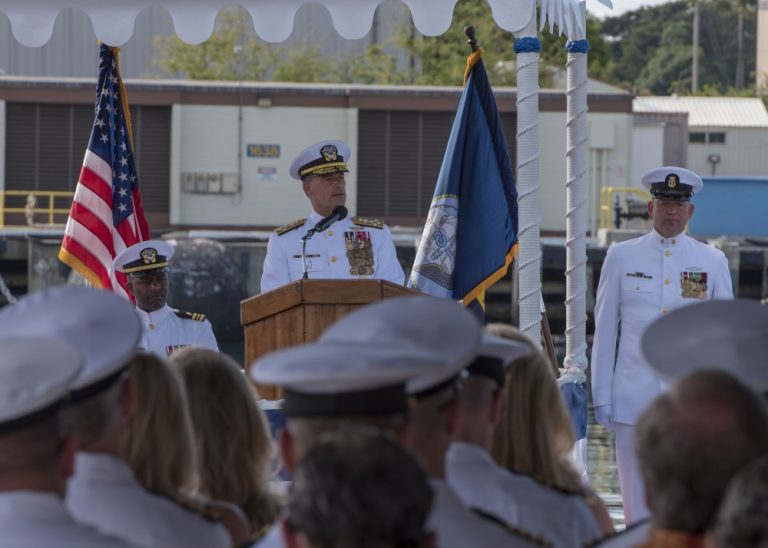
This article was originally published by Radio Free Asia and is reprinted with permission.
The United States is seeking access to more bases in the Philippines on top of nine sites already included under an expanded pact, military chiefs said Thursday, amid heightened regional tensions with China.
During annual bilateral talks in Metro Manila, he and Philippine military chief Romeo Brawner Jr. recommended giving American forces greater access to bases here, but their governments would need to approve this, said Adm. John C. Aquilino, head of the U.S. Indo-Pacific Command.
“Gen. Brawner and I made recommendations to our senior leaders for the consideration of additional sites, but there is still work to do there before we get to that answer,” Aquilino told reporters at the Philippine military’s headquarters in Quezon City.
Aquilino and Brawner did not give a number for how many more bases might be added under the Enhanced Defense Cooperation Agreement (EDCA), but the addition of four bases this past February caused some controversy in the Philippines and it angered China.
“We are in discussions, but everyone has a boss and we both have bosses, we’ll have those conversations – I think in private, and give our bosses some decision space on how they’d like to go forward,” Aquilino said.
Filipino and U.S. officials have denied that giving American forces rotational access to more Philippine bases is connected to tensions with China over a territorial dispute in the South China Sea and Taiwan. China reacted to the move earlier this year, saying it was provocative and aimed at helping the U.S. contain the People’s Republic and its military.
Aquilino was in the Philippines this week to visit three of the EDCA sites and meet with Brawner to discuss ways to deepen defense ties between the longstanding allies.
The U.S. military chief for the region spoke to reporters after the annual meeting of the Mutual Defense and Security Engagement Boards, which are responsible for coordinating cooperation between the two militaries under the 1951 Mutual Defense Treaty.
In February, Manila added four sites that the U.S. could access under EDCA, increasing the total number of bases to nine.
The decision by the Marcos administration to allow U.S. forces greater access to local bases has angered some Filipinos, who worry that their country, as a consequence, would be in the line of fire should war break out between the U.S. and China over Taiwan.
In May, hundreds of people protested against the EDCA pact outside the U.S. Embassy in Manila, on the same day that President Ferdinand Marcos Jr. was meeting with U.S. President Joe Biden at the White House in Washington.
Three of these new sites are in the northern Philippines facing Taiwan, while one is in the island of Palawan facing the South China Sea. Meanwhile in Taiwan on Thursday, the defense ministry reported that 68 Chinese warplanes and 10 navy ships had been “detected near the island,” starting on Wednesday morning, the Agence France-Presse news agency reported.
The U.S. has added 63 projects for the EDCA sites on top of the previously approved 32, Aquilino said, adding that these projects include multipurpose storage facilities, road networks and fuel storage, among others.
“The United States has identified investments of almost $110 million [6.2 billion pesos] to those sites to build capability capacity for the AFP [Armed Forces of the Philippines] to use every day and for the United States to fall in when invited,” the admiral said.
For his part, Brawner said that the nine bases in total were meant for joint training as well as humanitarian and disaster-response operations, and were not related to regional security threats.
“All of these joint operations, even the selection of our EDCA sites, have nothing to do with the other countries in the Indo-Pacific region, meaning the threats that could come out from these countries,” Brawner said.
“We believe that doing certain things together would bring more value, for instance training together,” he said.
PHOTO2
Meanwhile, China has ramped up its presence in the South China Sea. Beijing has deployed its China Coast Guard ships and maritime militia ships in the West Philippine Sea – the part of the South China Sea within Manila’s jurisdiction – to harass Philippine ships, Filipino officials said.
U.S. Navy reconnaissance planes were seen flying over the disputed waters during recent Philippine resupply missions to Ayungin (Second Thomas) Shoal, where the World War II-era BRP Sierra Madre serves as Manila’s military outpost in the disputed atoll.
Tour of three sites
On Wednesday, Brawner, Aquilino, and MaryKay Carlson, the U.S. ambassador to the Philippines, inspected three EDCA sites – Lal-lo airport and Camilo Osias Naval Base, both in Cagayan in northern Philippines, and Basa Air Base in Pampanga, near Manila.
Manila has called on Washington to construct a pier and refurbish the airstrip at the naval base along with a fuel storage facility and command center in Lal-lo airport.
“We are not just looking at how we can operate together more efficiently, but also we are looking at the future operations that we are going to conduct,” Brawner told reporters on Wednesday. “All of these factors should come in as we decide on which projects we’re really going to pursue.”
When the expanded EDCA was announced seven months ago, China immediately stated its opposition to the widened pact.
“Such moves contradict the common aspiration of regional countries to seek peace, cooperation and development, and run counter to the common aspiration of the Filipino people to pursue sound economic recovery and a better life in cooperation with China,” said Huang Xilian, Chinese ambassador to Manila in a statement issued in February.
“It is hoped that the Philippine side stays vigilant and resists from being taken advantage of and dragged into troubled waters.”
American Military News Rephrased By: InfoArmed
